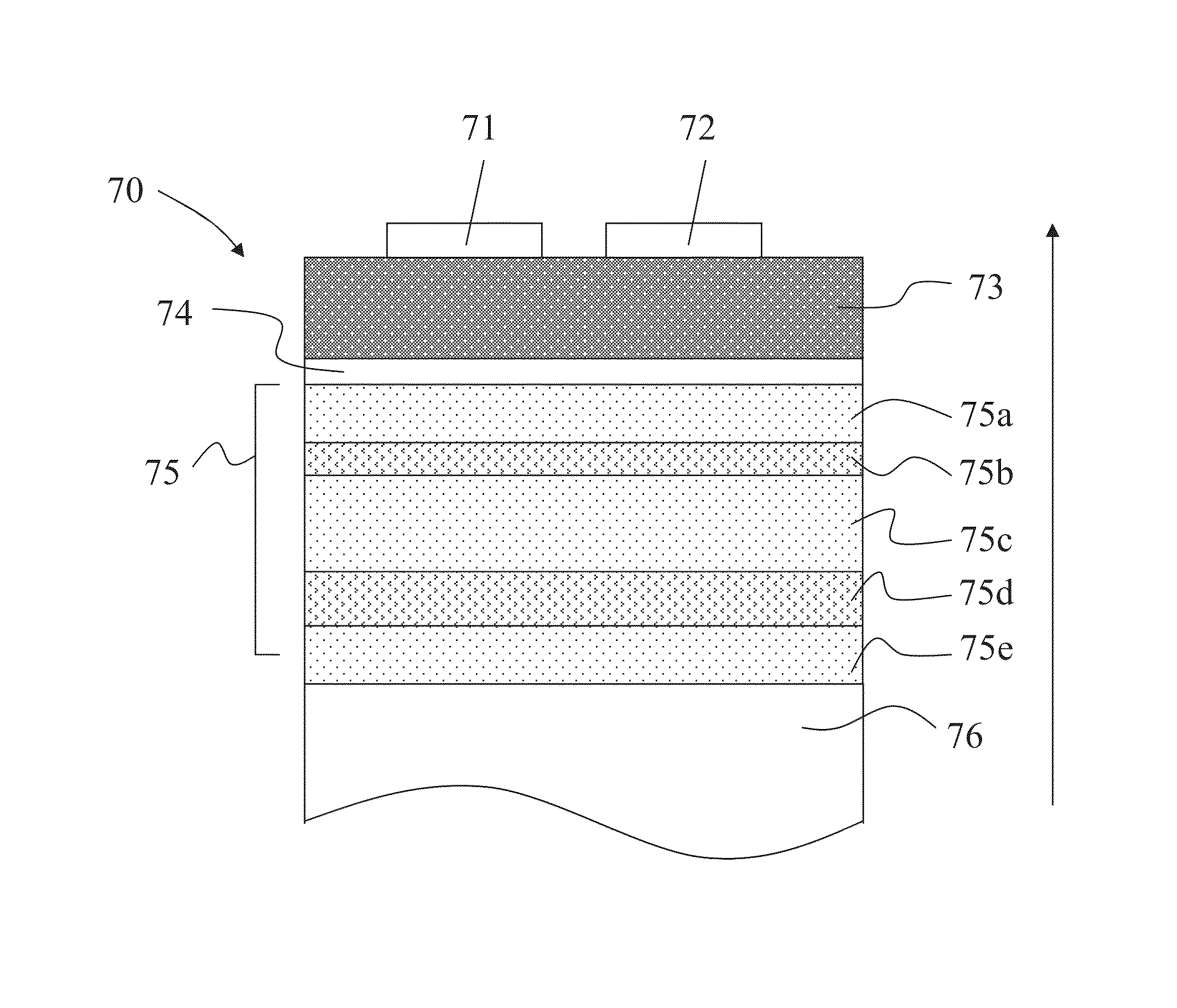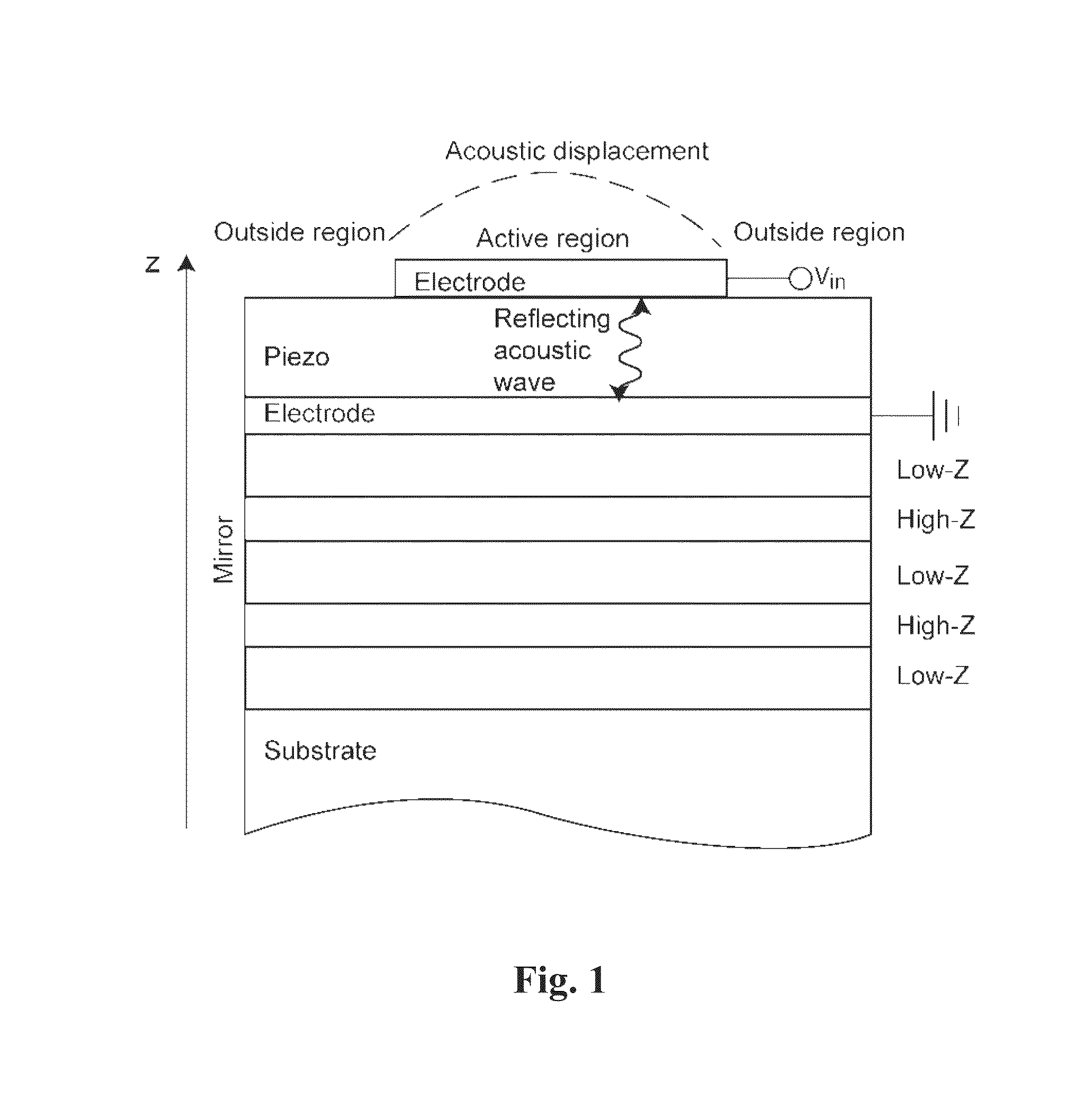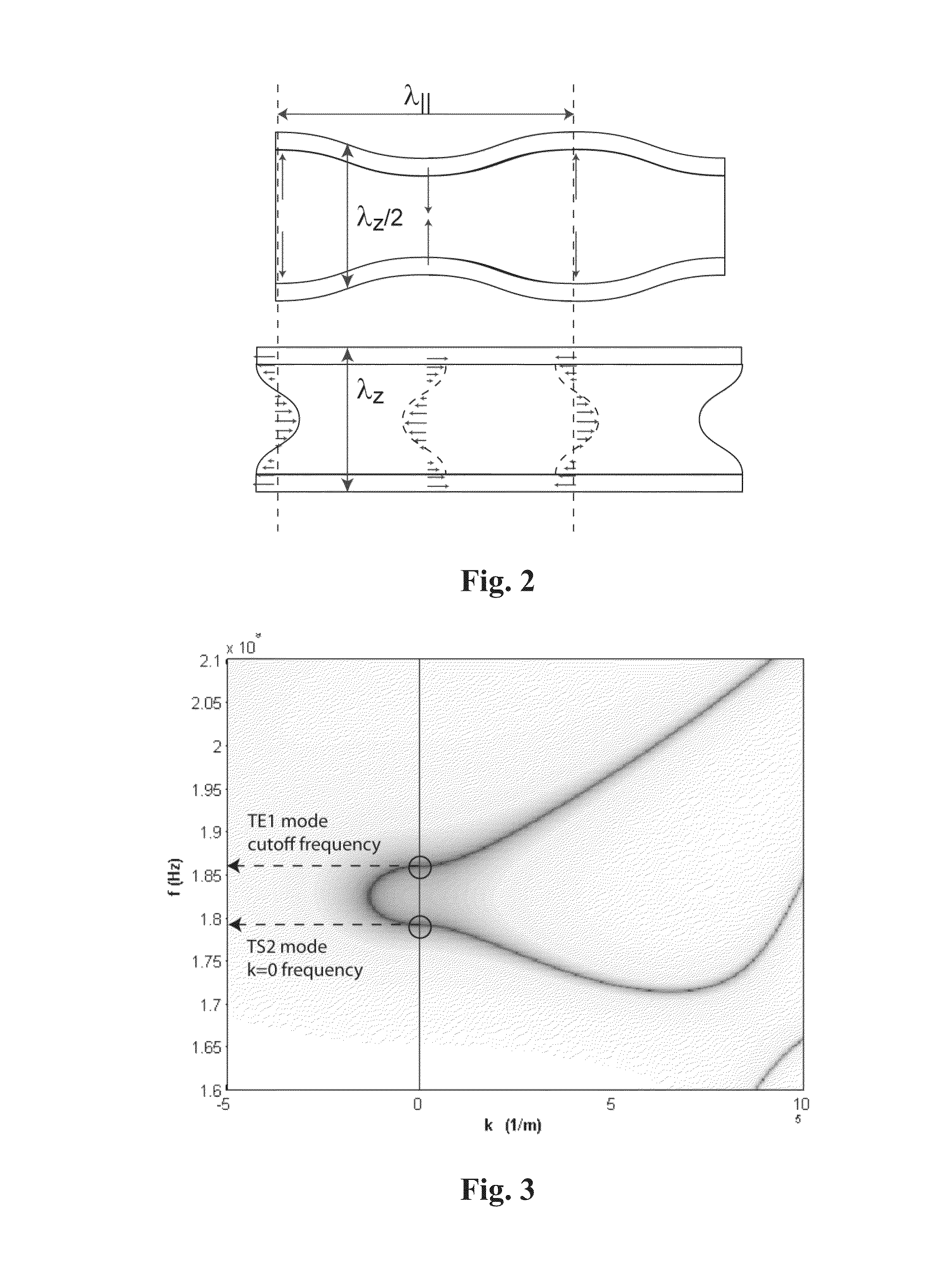Laterally coupled bulk acoustic wave filter with improved passband characteristics
a bulk acoustic wave and filter technology, applied in the direction of electrical equipment, impedence networks, etc., can solve the problems of large number of layers and their sensitivity to the thickness of piezolayers, not extensively studied, and fabrication process difficulty and consequently expensive, etc., to improve the quality of passband and near-passband response
- Summary
- Abstract
- Description
- Claims
- Application Information
AI Technical Summary
Benefits of technology
Problems solved by technology
Method used
Image
Examples
Embodiment Construction
[0067]FIG. 7a shows a filter structure according to one embodiment of the invention. The structure comprises a planar piezoactive layer 73 on a planar bottom (ground) electrode layer 74. The input and output ports or electrodes 71 and 72 are made of a patterned layer on top of the piezoactive layer 73. Below the bottom electrode 74, there is an acoustic reflector 75, which is formed of several sublayers 75a-e. The sublayers comprise low-impedance layers 75a, 75c and 75e and high-impedance layers 75b and 75d in alternating manner. Below the acoustic reflector 75 is a substrate 76 supporting the whole structure and absorbing the acoustic energy passing though the acoustic reflector 75.
[0068]In more detail, the structure according to FIG. 7 comprises, listed from top to bottom, a conductive top electrode layer patterned so as to form at least two electrodes 71 and 72,[0069]a piezoactive layer 73,[0070]a conductive bottom electrode layer 74,[0071]a reflector stack comprising[0072]a low-...
PUM
 Login to View More
Login to View More Abstract
Description
Claims
Application Information
 Login to View More
Login to View More - R&D
- Intellectual Property
- Life Sciences
- Materials
- Tech Scout
- Unparalleled Data Quality
- Higher Quality Content
- 60% Fewer Hallucinations
Browse by: Latest US Patents, China's latest patents, Technical Efficacy Thesaurus, Application Domain, Technology Topic, Popular Technical Reports.
© 2025 PatSnap. All rights reserved.Legal|Privacy policy|Modern Slavery Act Transparency Statement|Sitemap|About US| Contact US: help@patsnap.com



